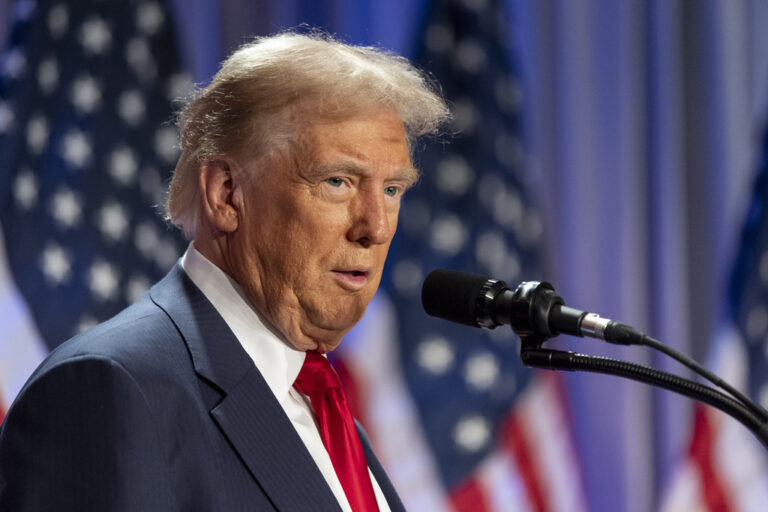
Pesky. Illegal. Effective?
Lawn signs touting local and statewide candidates are in full bloom along highways, street corners and other public spaces. It’s the sign of the season. And despite legal restrictions, the markers can sprout invasively.
Campaigns hope voters see them as a signal of the community’s support for the candidate or issue. But repeat exposure can rub some the wrong way.
“They just mushroom,” said Elizabeth Lessner, a central Ohio restaurateur. “It used to be they put one sign on the corner and now there’s 50.”
Lessner is one of the Columbus Sign Ninjas, a group that sprang up in the perennial battleground state to take down campaign clutter from public spaces.
State and local sign laws can vary. Ohio, like other states, prohibits such advertising from being placed in the public right of way — which would include interstates and state routes. Officials don’t want signs to obstruct drivers’ views or present safety hazards.
The ninja members use social media to report signs and occasionally call out campaigns seen as big offenders. Some candidates have apologized for their sign placement on the group’s Facebook page, which boasts nearly 300 members.
Karen Thomas, a Columbus resident and ninja member, has been uprooting stray signs since 2008. Her first take came after she passed multiple markers near the interstate exit for a mall. Thomas recalled, “If I want them to go away, I’m going to have to pull over and pick them up.”
So she did. And she continues to snatch signs when she runs errands, carefully avoiding vehicles that whiz by her.
“I don’t lollygag,” said Thomas, a corporate financial consultant.
It’s not just residents who get irked by the signage.
In Providence, Rhode Island, large signs for his opponent led to a complaint from Republican mayoral candidate Dan Harrop. Harrop told the city solicitor’s office this week that signs for independent candidate Buddy Cianci far exceed the size allowed by city ordinances.
Signs are a fast, cheap and easy way to grow name recognition and increase a candidate’s visibility in a neighborhood. They’ve been around since the infancy of the country’s democracy, said Benjamin Bates, a professor of communication studies at Ohio University.
Candidates and their supporters will place signs near the roadways because they hope more voters will see them.
“It’s sort of the principle that any publicity is good publicity,” Bates said.
Ben Donahower, a Pennsylvania-based political consultant who sells lawn signs, said he advises campaigns to place signs on private property. That means supporters have names and faces.
“Any candidate can go out and spend a day putting out a bunch of signs along a highway,” Donahower said. “It’s a different scenario to talk to somebody and say, ‘Do I have your vote?’ They say yes. ‘Can I put a yard sign out in your yard?’ They say yes.”
Still, even if irritatingly placed in a public space, Bates said, “you’ll definitely remember the name on the sign. Or at least that’s what the campaign hopes.”
(AP)











2 Responses
Other countries have resolved this problem. Just follow the lead of places such as North Korea and Cuba, and you won’t have a problem with electioneering.
Each sign really says “I live in a democracy and I’m proud of it”.
As long as those who hang the signs are obligatedted by law to remove them after the elections (or face penalties if they do not) I’m OK with the signs.